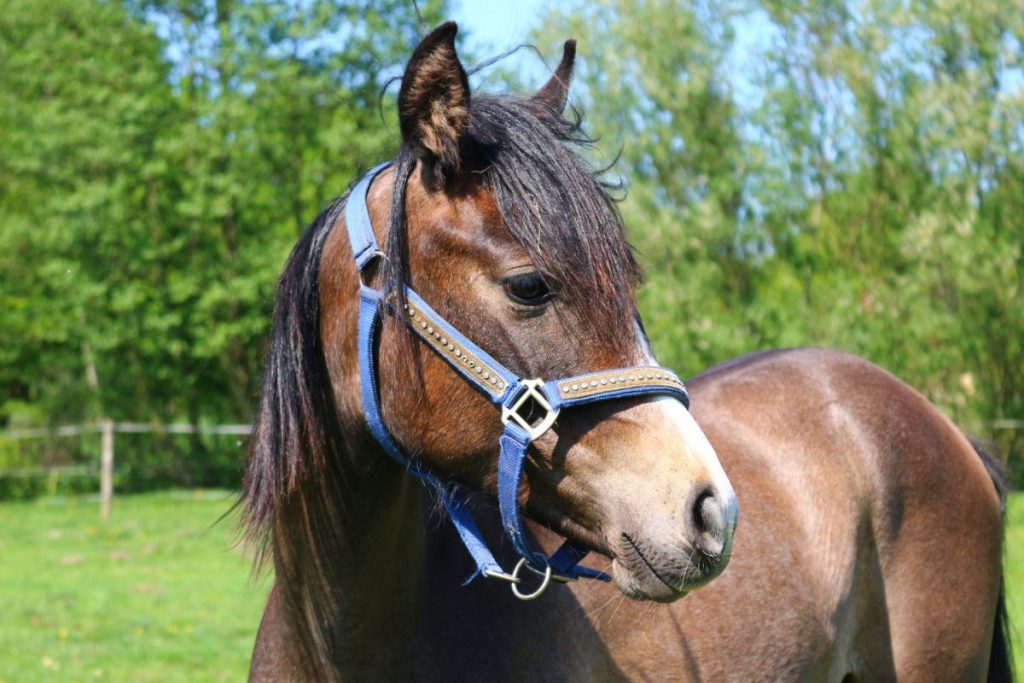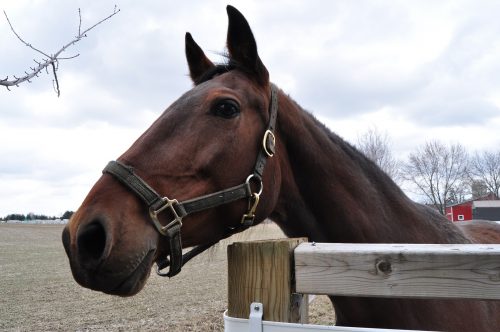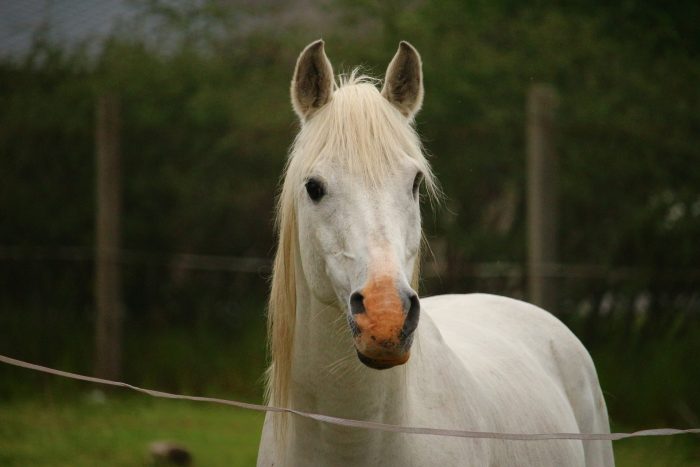Has your horse been acting a little testy lately? Has he sidestepped out from under you as you’re trying to mount, snap at you when you’re currying him, or misbehaving in the arena? You better listen up because in some instances, your steed may not just be acting difficult; he could be telling you point-blank that his body is bothering him. Here are some common causes and signs that your horse is in pain.
Lameness
Lameness is one of the most prevalent vet complaints in horses. While there is a myriad of reasons why your horse can go lame, some conditions occur more frequently than others and can range from an obvious non-weight bearing gate to subtler symptoms. Here are some of the top causes of lameness in horses.
Foot Abscess
A foot abscess is a localized infection located just under the sole of the hoof. As it develops, it can cause pressure on the sensitive foot structures and since your horse’s hoof wall does not expand, the pressure can become increasingly painful. A diagnosis is typically easy and straight-forward, achieved with hoof testers.
Navicular Syndrome
Your horse’s navicular bone is a tiny canoe-shaped bone located within the hoof. Horses with navicular disease will often have an abnormal hoof-pastern angle. Affected animals tend to experience lameness in both of their front limbs, landing toe-first as they walk or trot. Radiographs should be administered by your vet to investigate the area and will show evidence of inflammation and navicular bone pathology, such as a rough bone surface.
Ligament and Tendon Injury
There are many critical tendons and ligaments in your horse’s lower leg. Signs of this issue may include heat, swelling, pain on palpation, and lameness. Because these body parts receive an extremely limited blood supply, the healing process can be very slow. Healing options can include stall rest, shockwave therapy, and anti-inflammatory medication.
Degenerative Joint Disease
This is a common occurrence in older equine athletes. Excessive wear and tear can greatly impact the natural repair process of joint cartilage in your horse. Signs for degenerative joint disease in horses can include swelling and heat around the joint, lameness, and a reduced range of motion.
Back Pain
Besides lameness, horses can experience severe back pain as well. Signs of back pain in horses will typically include:
- Pinning ears or biting when you put the saddle on
- Evading contact during grooming
- Sinking or bucking when you mount
- Restricting his rolling or lying down
- Rearranging the bedding in the stall so he can stand in a more comfortable position
Wither Woes
Withers can often be overlooked when you’re trying to find the cause of your horse’s pain. But even a tiny wither problem can greatly impact his performance.
Your horse’s withers are a section of his spinal column and help anchor major ligaments that support the neck and the back. Some signs of sore withers include:
- Objecting to the saddling process
- Refusing to jump fences or his jumps are flat and stiff
- Resisting collected work
Equine Colic
Colic is any abdominal pain that horses may suffer from. Some of the main causes of colic include moldy or tainted food, sand ingestion, stress, dental issues, high grain based diets, a parasite infection, lack of water, or an abrupt change in feed.
Symptoms of colic can include:
- Bloating
- Distress
- Sitting or stretching
- Sweating
- Loss of interest in food and water
- Pawing
- Rolling
- An absence of gut sounds
There are different types of colic that your horse could suffer from, including stomach distention, displacement colic, impaction colic, gas colic, spasmodic colic, and enteritis.
Horses are large and complicated animals that can suffer from a variety of painful signs and symptoms. As a responsible horse owner, you should always keep a vigilant eye on your animal and be aware of any changes in behavior or personality. It is wise to contact your vet immediately if you notice any of the above signs of the problems listed above.






